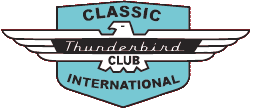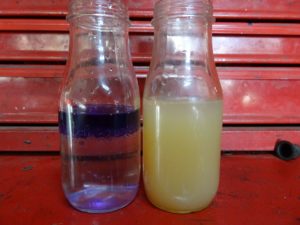 Gil’s Garage
Gil’s Garage
Gil Baumgartner
CTCI Authenticity Chairman
If you cannot remember or do not know when the brake fluid was replaced in your Thunderbird, it is time. I recommend replacing the fluid every three years. See the restoration manual pages 324-327 for how-to tips.
Some brake fluids do not mix, so it is important to know what type of fluid is in your vehicle. Typically we deal with only two types, glycol esters which is DOT 3 and DOT 4 and has been the standard for many years. Then there is Silicon fluid DOT 5.
Synthetic Brake Fluid is a fancy name that has been added to DOT 3 or DOT 4 in hopes of increasing sales – it is still glycol esters, so don’t be fooled with the word synthetic, it is still DOT 3 or DOT 4.
DOT 3 and DOT 4 will mix, no problem, but it is important to know that DOT 3 and DOT 4 will not mix with Silicone DOT 5. Simply put it will gum up the system. Before brake fluid is added to a system the type if unknown should be identified. This can be determined by removing a few table spoons of fluid from the system by either bleeding fluid through one of the wheel cylinders or simply removing it from the master cylinder with a syringe. Once removed mix it with water. DOT 3 or DOT 4 will mix with water. If it is Silicon fluid it will separate and float to the top very quickly. The photo shows silicon fluid on the left, and DOT 3 or DOT 4 thoroughly mixed with water on the right which will not separate.
For detailed information on the chemical nature of brake fluid see the Gil’s Garage article Brake Fluid, written by Steve Wall, a former materials engineering supervisor at a major brake system supply company.

